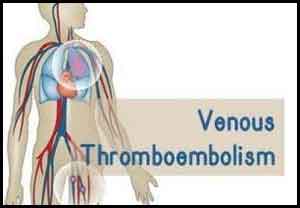- Home
- Editorial
- News
- Practice Guidelines
- Anesthesiology Guidelines
- Cancer Guidelines
- Cardiac Sciences Guidelines
- Critical Care Guidelines
- Dentistry Guidelines
- Dermatology Guidelines
- Diabetes and Endo Guidelines
- Diagnostics Guidelines
- ENT Guidelines
- Featured Practice Guidelines
- Gastroenterology Guidelines
- Geriatrics Guidelines
- Medicine Guidelines
- Nephrology Guidelines
- Neurosciences Guidelines
- Obs and Gynae Guidelines
- Ophthalmology Guidelines
- Orthopaedics Guidelines
- Paediatrics Guidelines
- Psychiatry Guidelines
- Pulmonology Guidelines
- Radiology Guidelines
- Surgery Guidelines
- Urology Guidelines
VTE Risk higher in Most Emergency General Surgery Patients

Venous thromboembolism (VTE) represents the most preventable cause of morbidity and mortality in hospitalized patients.Emergency general surgery patients are at increased risk of morbidity and mortality because of the nature of acute surgical conditions and the challenges related to prophylaxis.Therefore the Agency for Healthcare Research and Quality (AHRQ) suggests appropriate VTE prophylaxis as a top patient safety practice.Patrick B. Murphy, M.D., M.P.H., from Western University in London, Canada, and colleagues reviewed the literature to assess VTE prevention among EGS patients.The researchers found that almost all emergency general surgery (EGS) patients treated operatively and nonoperatively have increased the risk of venous thromboembolism (VTE) and should receive prophylactic treatment.The study has been published in Journal JAMA Surgery.
The researchers searched MEDLINE, Embase, and the Cochrane Database of Collected Reviews from January 1, 1990, through December 31, 2015. Nearly all operatively and nonoperatively treated EGS patients have a moderate to high risk of developing a VTE, and individual risk should be assessed at admission. Pharmacologic prophylaxis in the form of unfractionated or low-molecular-weight heparin should be considered unless an absolute contraindication, such as bleeding, exists.
The inclusion criteria were that the patients should receive the first dose at admission to the hospital, and administration should continue until discharge without missed doses. Certain patient populations, such as those with malignant tumors, may benefit from prolonged VTE prophylaxis after discharge. Mechanical prophylaxis should be considered in all patients, particularly if pharmacologic prophylaxis is contraindicated. Studies that specifically target improved adherence with VTE prophylaxis in EGS patients suggest that efficacy and quality improvement initiatives should be undertaken from a system and institutional perspective.
The researchers concluded that Operatively and nonoperatively treated EGS patients are at a comparatively high risk of VTE. Despite gaps in existing literature with respect to this increasing patient population, successful best practices can be applied. Best practices include assessment of VTE risk, optimal prophylaxis, and physician, nurse, and patient education regarding the use of mechanical and pharmacologic VTE prophylaxis and institutional policies.“Operatively and nonoperatively treated EGS patients are at a comparatively high risk of VTE,” the authors write. “Best practices include assessment of VTE risk, optimal prophylaxis, and physician, nurse, and patient education regarding the use of mechanical and pharmacologic VTE prophylaxis and institutional policies.”

Disclaimer: This site is primarily intended for healthcare professionals. Any content/information on this website does not replace the advice of medical and/or health professionals and should not be construed as medical/diagnostic advice/endorsement or prescription. Use of this site is subject to our terms of use, privacy policy, advertisement policy. © 2020 Minerva Medical Treatment Pvt Ltd